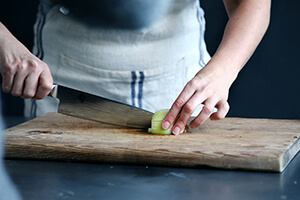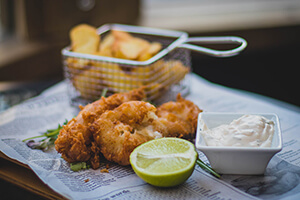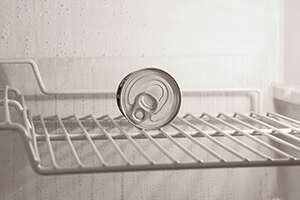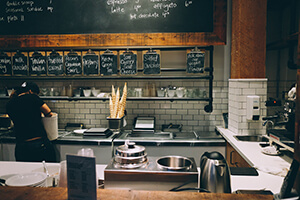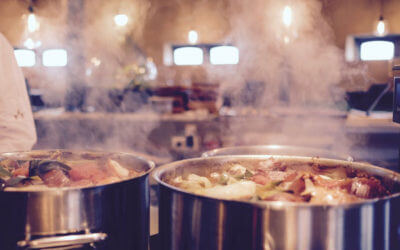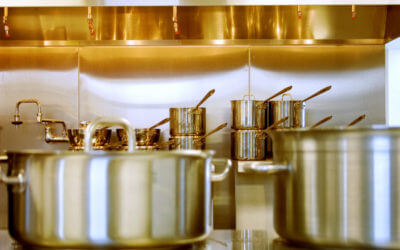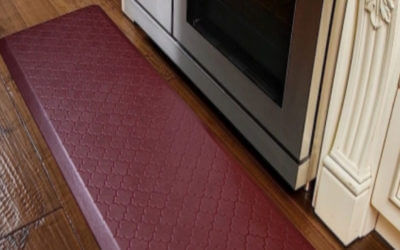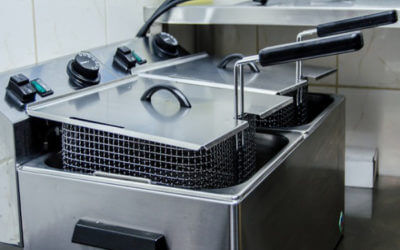Pulping and Grinding: A Starter’s Guide to Reducing Commercial Food Waste Costs
February 13, 2018For most restaurant owners and managers, the expenses involved in making meals are always under careful consideration.
Water is needed to prepare, cook and wash food; power is necessary for food prep, cooking and cooling, and so on. However, how many of us consider the costs involved in dealing with the food that we don’t use – the food that finally ends up as waste?If you dispose of your food waste in the trash, you will have to pay tipping fees on all that weight. In addition, you have the potential issues of trash odors and pests. When you add labor expenses on top of all that, throwing food waste in the trash isn’t cheap. Despair not. There are several types of kitchen equipment available to help reduce the size of this problem. The easiest way to decrease your food waste is to grind it and press as much water out of it as possible, using a type of mechanical kitchen equipment known as a pulping system.
Shrink your Food Waste with Pulping Systems
Pulping systems with dewatering presses decrease food volume by as much as eighty five percent. Although the leftover waste can be thrown away, a pulping system is a particularly good kitchen equipment choice if organic waste recycling is offered in your region. With pulping kitchen equipment, your disposal charges will decline substantially, seeing that your waste hauler will collect only fifteen percent of the amount of food waste you used to produce. And this can be reused as compost!
When it comes to buying your kitchen equipment, traditional pulping systems can range from $35,000 to $150,000 or more. However, multiple producers now create food grinding and dewatering systems on a smaller scale. Such systems contain a large disposer, coupled with an under-counter dewatering press, making them appropriate kitchen equipment even for mid-sized restaurants.
Upgrade your Food Wast Process with Slow Speed Grinders
For an even more efficient solution, slow speed grinders (SSGs) are a type of kitchen equipment that lessens waste more successfully and quietly than pulping systems. While pulping systems do reduce solid waste substantially using recycled water, you may lessen the noise in your commercial kitchen if you use a slow speed grinder. Another advantage is that SSGs are a less complicated kind of kitchen equipment to clean and maintain.
Slow speed grinders use existing, proven technology in grinding and applies it as follows:
Reduced Noise and Vibrations
SSG kitchen equipment significantly reduces noise and vibrations, because you’re using a grinding mechanism instead of a regular rotating plate. As opposed to the typical, loud disposer noises, slow speed grinders produce what could be described as a low hum.
Effective Water Extraction
the SSG makes use of a centrifuge process, with a spinning screw and screen in place of a conventional dewatering screw press. Working like a wringer washer to extract water, this feature of the slow speed grinder variety of kitchen equipment drastically improves the effectiveness of the water extraction process. The result is a dryer, lighter-weight end-product that is cheaper to dispose of.
Water Savings
Current pulper technologies pump in freshwater and then recycle it as a slurry. SSG kitchen equipment takes water saving a step further through the use of water from the dishwasher and conveyor. Used water within the dishwasher pre-rinse tank can be piped over to be used in your new piece of kitchen equipment, the slow speed grinder.
Integration with Dehydrator
As soon as your slow speed grinder has decreased your waste, it can be conveyed over to the dehydrator, where the food waste can be brought down between a ninety and ninety five percent dry state.
Cooking Equipment Spotlight: The Right Knife for the Job
Not everyone who’s involved in a commercial kitchen has had professional training as a chef. As a result, not everyone is aware of how to choose the best cooking equipment for each job. Having the right knife is one of the most vital choices you can make during food...
Cooking Equipment Spotlight: Choosing the Right Fryer
Choosing the right fryer may seem straightforward. After all, you just need something to hold oil and keep it hot so you can cook some things, right? Not quite. You have a lot of choices, which helps you choose the cooking equipment that’s perfect for your...
Keep Your Foodservice Equipment Coolers Clean & Functional
Whether you run a convenience store or a restaurant, you need safe storage for food that must be refrigerated. Commercial coolers are the foodservice equipment you need – but it’s important to keep them in good shape. Otherwise, your investment won’t give you the...
Keep Pests Out of Your Commercial Kitchen
Having pests in your kitchen is already a nightmare, but if health inspectors find them it gets even worse. Keep your guests safe and your restaurant operating safely. Your commercial kitchen is automatically a target of a variety of bugs and other pests. It has...
Restaurant Supplies: Make a Great Impression With the Right Dinnerware
When customers sit down in your restaurant, what’s one of the first things they see? Yes, the décor, hostess, and more. But there’s something else that matters a great deal – but is often overlooked. It’s the silverware and tableware! People will judge your...
The Best Kitchen Equipment for a New Graduate
If you’re like many people, you know a young adult who will be setting up their own place for the first time this summer. It’s an exciting time, but very nerve-wracking. It’s amazing how quickly the costs add up as you outfit an apartment – especially in the kitchen!...
Outside the Commercial Kitchen: Food Safety While Catering
Many restaurants and other eating establishments like to provide catering for special events. Catering a huge business, worth over $53 billion per year. Catering allows your restaurant to reach customers who might never set foot in your establishment otherwise. It’s...
Help Your Commercial Kitchen Run Smoothly With Proper Leadership
We focus a lot on how having the right equipment can keep your commercial kitchen moving quickly and efficiently. However, it’s not just the equipment that makes the difference in your restaurant’s success. Having proper leadership in your commercial kitchen – and...
3 Times Used Kitchen Equipment is As Good As New
Are you nervous about buying used kitchen equipment? It’s understandable. After all, restaurants are subject to a lot of regulations, and if something goes wrong you could lose your business. However, there are many times that used kitchen equipment makes perfect...
Kitchen Equipment You Need: Wellness Mats
When it comes to serving customers, you leave no stone unturned. You choose the best kitchen equipment, test your recipes, buy the best ingredients, and hire excellent staff. Unfortunately, there’s something that even the savviest restaurant owner often forgets –...
Is Your Kitchen Equipment Ready for National Hamburger Month?
Restaurants can always use a fun and playful way to bring in new customers. Did you know that May is National Hamburger Month? Why not use that fact as an entertaining way to bring in new customers? You can offer a special promotion on a hamburger, or feature other...
Understanding Restaurant Equipment: A Variety of Fryers
You may think of a fryer as a simple machine with a basket and hot oil. If you do, you don’t quite understand this restaurant equipment. You’re missing out on the enormous range of different fryers available! The truth is there are four very different types of...
Why a Frozen Drink Machine is Vital Foodservice Equipment for Your Store
It’s starting to get hot out there, and as summer approaches you should be thinking about how to promote your cold food and drink offerings. Each store will have different foodservice equipment, but if you don’t have a frozen drink machine, you should seriously...
How to Increase Sales From Your Cold Case
As we move into May, it’s time to start thinking about ramping up your summer sales. One of the key focuses can be the cold case in your store. This piece of foodservice equipment can really boost your bottom line. A cold case gives you an opportunity to display...
Keep Restaurant Equipment Safe: Proper Use of a Breading Station
Keeping food safe and sanitary is vital for any restaurant. A lot foodborne illness isn’t the result of the food itself, but rather a misuse of restaurant equipment that causes contamination. A breading station is a piece of equipment that has a lot of opportunity for...

